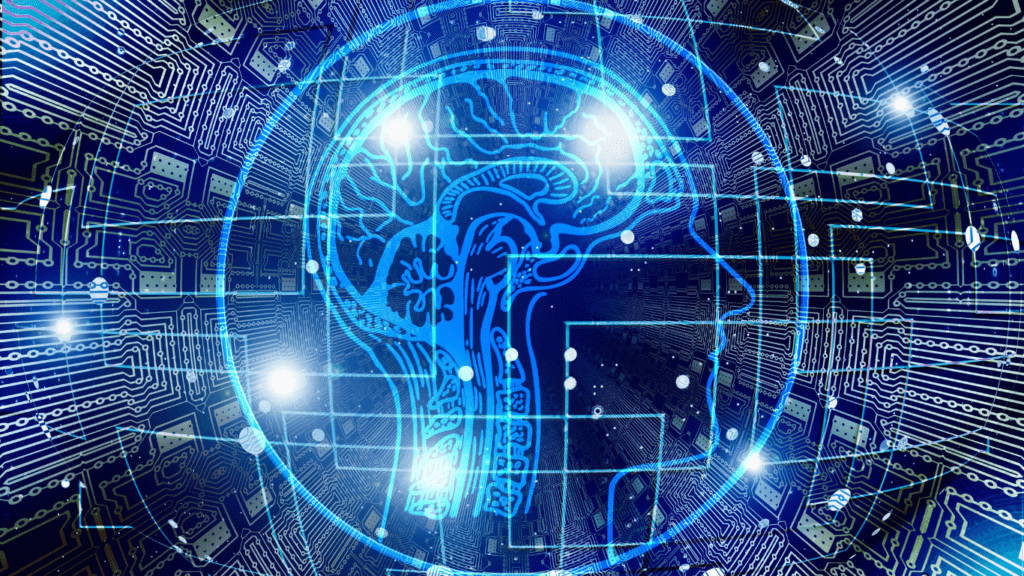Understanding Machine Learning in Digital Campaigns
Machine learning, a branch of artificial intelligence, processes vast amounts of data to identify patterns. In digital marketing, it helps predict consumer behavior, segment audiences, and optimize ad strategies. By analyzing data from various sources like social media and website interactions, it provides insights previously unattainable through manual analysis.
First, data collection is crucial. Digital campaigns generate large datasets, including user clicks, impressions, and engagement metrics. Machine learning algorithms process this data and reveal trends that guide campaign adjustments. For instance, if user engagement spikes at certain times, I can schedule posts during those peak hours for maximum impact.
Next, audience segmentation becomes more precise. Traditional methods use demographics alone, but machine learning classifies users based on behavior, interests, and interactions. This enables targeted messaging, improving relevance and engagement. For example, machine learning can identify a segment interested in eco-friendly products, allowing me to tailor ads specifically for that group.
Ad spend optimization is another advantage. Machine learning evaluates the performance of different ads in real time. By reallocating budgets to high-performing ads, it boosts overall campaign efficiency. If an ad underperforms, I can pause it and shift funds to better-performing ones, maximizing ROI.
Predictive analytics enhance personalization. By analyzing patterns in user behavior, machine learning forecasts future actions, enabling personalized experiences. If a user frequently visits a section of my site, I can serve them related content or offers, increasing the probability of conversion.
Incorporating machine learning in digital campaigns leads to insightful, data-driven decisions. It streamlines processes and enhances the effectiveness of marketing strategies, ultimately providing a competitive edge in the fast-paced digital landscape.
Key Benefits of Machine Learning for Digital Campaigns
Machine learning offers several key benefits for optimizing digital campaigns. These advantages make marketing efforts more efficient and effective.
Improved Targeting and Personalization
Machine learning enhances targeting by analyzing user behavior, preferences, and interactions. Algorithms segment audiences based on these patterns, creating highly specific groups. For example, I can now target users interested in fitness who also frequently shop online. This allows for personalized content delivery, significantly boosting engagement rates.
Real-time Data Analysis
Machine learning processes data rapidly, providing real-time insights into campaign performance. For instance, it continually monitors ad interactions, adjusting strategies on-the-fly. If an ad underperforms, machine learning directs resources toward higher-performing content immediately. This adaptive approach ensures campaigns stay relevant and effective throughout their run.
Enhanced ROI Measurement
Measuring ROI accurately becomes straightforward with machine learning. It evaluates various metrics—like conversion rates and customer acquisition costs—with high precision. By assessing ad performance in real-time, machine learning reallocates budgets dynamically to maximize returns. For example, if a particular ad yields a higher conversion rate, the system increases its spending to capitalize on that success.
Implementing Machine Learning in Digital Campaigns

Optimizing digital campaigns using machine learning involves several critical steps. I will break down the essential components into manageable aspects.
Data Collection and Management
- Effective machine learning starts with robust data collection.
- Gather data from various sources, including website analytics, social media interactions, and CRM systems.
- This ensures a comprehensive view of consumer behavior.
- Clean and preprocess the data, removing duplicates and filling missing values to maintain data integrity.
- Data management involves storing this information in a centralized repository, accessible for analysis, ensuring the data is current and reliable.
Algorithm Selection and Application
Choosing the right machine learning algorithm is crucial for campaign success. I evaluate various algorithms like decision trees, random forests, and neural networks, considering the campaign’s specific goals. For instance, I use supervised learning algorithms for predicting user behavior based on historical data. In contrast, unsupervised learning is valuable for clustering users based on their activity patterns. After selecting an algorithm, I train the model using the processed data, ensuring the model can accurately predict outcomes and optimize the campaign strategy.
Monitoring and Adjusting Campaigns
Ongoing monitoring is essential for maintaining campaign effectiveness. I use machine learning tools to continuously track key performance indicators (KPIs) like:
- click-through rates
- conversion rates
- user engagement
Based on these metrics, I make real-time adjustments to the campaign. For example, if a particular ad set underperforms, the algorithm reallocates the budget to better-performing ads. This dynamic adjustment maximizes ROI and ensures the campaign remains relevant and effective throughout its duration.
Case Studies: Successful Campaigns Optimized by Machine Learning
Machine learning has proven invaluable in optimizing digital campaigns. Here are some case studies demonstrating its effectiveness.
Company A: Increased Conversion Rates
Company A, an e-commerce retailer, used machine learning to enhance customer conversion rates. By integrating machine learning algorithms into their data analysis processes, they identified high-value customer segments and refined their targeting strategies. The predictive models analyzed user behavior on their site, recognizing patterns in shopping habits and interaction points. Through these insights, they personalized recommendations, promotions, and product displays for targeted user groups. Consequently, Company A observed a 30% increase in conversion rates within six months, attributing to more personalized and relevant customer interactions.
Company B: Enhanced Customer Engagement
Company B, a streaming service provider, leveraged machine learning to boost customer engagement. They employed machine learning to analyze user preferences and viewing history, tailoring their content recommendations accordingly. The algorithms continuously learned from user interactions, fine-tuning future recommendations to align more closely with user interests. This strategy led to a 40% rise in engagement metrics, including longer session durations and higher content consumption rates. By utilizing machine learning, Company B ensured its users received highly relevant content, significantly enhancing overall satisfaction and loyalty.
Challenges and Considerations
Even with the promise of optimizing digital campaigns, implementing machine learning comes with its own set of challenges and considerations.
Data Privacy and Security
Ensuring data privacy and security is critical when using machine learning. Personal data used in campaigns must comply with regulations like GDPR and CCPA. I use encryption and anonymization techniques to safeguard user information, reducing the risk of data breaches. Establishing clear data use policies and maintaining transparency with users build trust, ensuring compliance and protecting brand reputation.
Algorithm Bias and Transparency
Addressing algorithm bias and maintaining transparency are vital for ethical machine learning implementations. Bias can arise from training data that doesn’t represent the target audience accurately. I’ve found that using diverse datasets and constantly evaluating models for fairness helps mitigate bias. Additionally, maintaining transparency about how algorithms work and their decision-making processes is essential for gaining stakeholder trust. Providing explanations for algorithmic decisions ensures that campaign adjustments align with organizational ethics and user expectations.
Future Trends in Machine Learning for Digital Campaigns
Emerging trends in machine learning for digital campaigns indicate significant advancements in automation and personalization. AI-driven content creation tools, such as automated copywriting and design software, are set to revolutionize the industry. These tools use natural language processing (NLP) to generate relevant, engaging content at scale by analyzing existing materials and user data.
Advanced sentiment analysis tools will become increasingly sophisticated. These tools can gauge consumer emotions and reactions in real-time, allowing marketers to adjust their campaigns promptly. By understanding the emotional underpinnings of user interactions, businesses can create more resonant and impactful messaging.
Hyper-personalization will drive future marketing strategies. Machine learning models will analyze user behavior to an even more granular level, predicting preferences and needs with high precision. For example, dynamic website content that changes based on user history will become more prevalent, providing a personalized browsing experience.
Voice search optimization will gain prominence. As voice-activated devices and assistants become more widespread, adapting digital campaigns to accommodate voice search patterns will be crucial. Machine learning algorithms will help identify long-tail keywords and conversational search phrases, ensuring content aligns with how users verbalize queries.
Predictive analytics will further enhance ROI. Future advancements in machine learning will offer more accurate predictions of user behavior, enabling proactive campaign adjustments. For instance, predictive models might identify high-potential leads early in the funnel, allowing targeted efforts to convert these leads more effectively.
AI chatbots will evolve in complexity. These chatbots, powered by machine learning, will offer more natural and engaging interactions with users. They will be able to handle more complex customer queries, providing instant support and personalized recommendations, which enhances user experience and satisfaction.
Blockchain technology will intersect with machine learning to improve data security and transparency. This combination will ensure that user data is not only used efficiently but also securely, enhancing trust between consumers and brands. Secure data exchanges facilitated by blockchain will allow machine learning models to function with enhanced integrity.
The integration of augmented reality (AR) and machine learning will offer immersive ad experiences. AR-driven campaigns that leverage real-time user data for personalization will engage users in unprecedented ways. For example, virtual try-on solutions in e-commerce can dynamically adapt to user preferences, offering a tailored shopping experience.
Understanding these future trends helps prepare digital marketers for upcoming shifts in the landscape. Adopting these technologies and methods early will provide a competitive edge, ensuring campaigns remain relevant and effective in an evolving market.



